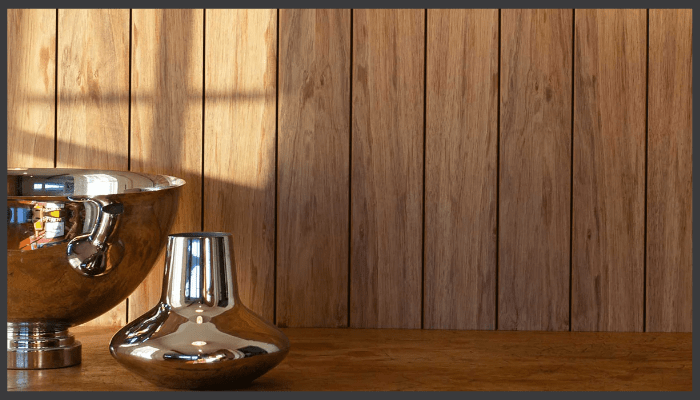Are V-Joint Lining Boards Made from Pine or Hardwood?
Table of Contents:
- What Are V-Joint Lining Boards?
- Pine V-Joint Lining Boards
- Hardwood V-Joint Lining Boards
- Pine vs Hardwood: Side by Side Comparison
- Choosing the Right V-Joint Lining Board for Your Project
- Conclusion
- Frequently Asked Questions
V-Joint lining boards bring style and sophistication. Especially through their tongue and groove timber lining board construction.
It is becoming the go to choice for interior panelling, walls, ceilings, and cladding throughout Australia.
Canberra homeowners and builders often wonder whether these lining boards come from pine or hardwood, and it matters.
A V-joint lining board used for in home interiors delivers both style and practicality, from feature walls to ceilings.
Your choice affects cost, durability, appearance, and whether they'll work in saunas, wet areas, or as feature walls. Let's explore the differences so you can pick what's right for your space.
What Are V-Joint Lining Boards?
V-Joint lining boards are timber panels featuring a distinctive V groove. This is where two boards meet, creating shadow lines that add depth and texture to any surface.
Available in both pine and hardwood timber species. These structural and decorative profiles are extremely versatile. Even more so than standard weatherboard or shiplap options. They give your walls or ceilings a modern yet timeless appearance.
Pine V-Joint Lining Boards
Key Features of Pine Boards
Pine timber lining boards typically come from plantation radiata pine. Design pine producers create long, continuous lengths. They're either finger jointed or supplied as defect free boards.
They're perfect for achieving seamless wall or ceiling installations. Many come prepped with products like Resene's genuine blue primer.
This helps achieve that popular Hamptons style interior design on your paint surface.
Benefits of Pine VJ Boards
Pine's lightweight nature makes installation straightforward, especially for DIY interior projects. Its affordability means you can cover large walls, ceilings, or eaves without breaking the budget.
These boards accept paint beautifully. They offer a flexible canvas for both traditional and modern house designs found throughout Australia.
Limitations of Pine
Pine lacks the natural hardness found in quality hardwoods and offers less durability. Particularly in moisture prone or high wear areas.
Untreated pine remains vulnerable to termites and humidity. Its appearance typically looks less refined than clear finished hardwood options.
Hardwood V-Joint Lining Boards
Popular Hardwood Timber Species
Australia's premium v joint lining boards feature:
-
Tasmanian Oak
-
Western Red Cedar (technically a premium softwood)
These timber species bring maximum strength and natural durability. It adds a refined appearance to any space.
Benefits of Hardwood VJ Boards
Hardwood boards deliver toughness and longevity, resisting wear, dents, and decay. Many create eye-catching timber features. These enhance interior walls, ceilings, and exposed areas like soffits. Cedar is the best choice for outdoor timber. It shines in humid areas and saunas, where other woods struggle.
Limitations of Hardwood
Quality hardwoods cost more per linear metre and their weight makes handling tougher. Installation often requires pre drilling or professional expertise. Remember, that higher initial investment won't suit every budget.
Pine vs Hardwood: Side by Side Comparison

Choosing the Right V-Joint Lining Board for Your Project
Picking between pine and hardwood v joint lining boards comes down to your budget. How much durability do you need? Do you want that natural timber appearance?
Where are they going (interior, exterior, wet area, or sauna). Go with design pine if you want cost effective boards that are easy to install for painted interior surfaces.
Choose hardwood for long-lasting luxury. Use Western Red Cedar for superior moisture resistance. This is especially important in humid or hot areas, like saunas.
Conclusion
Pine and hardwood joint lining boards offer both strength and style for Australian homes. Pine offers an affordable and simple choice for painted interior paneling. In contrast, hardwood adds elegance, strength, and durability, making it the standout feature in any space.
Choose a material that fits your design vision, budget, and performance needs. Remember to consider Canberra's climate and your specific requirements.
Frequently Asked Questions
What is the Main Difference Between Pine and Hardwood V-joint Lining Boards?
Pine stays lighter and more affordable, perfect for painted timber lining. Hardwood (or premium softwood like cedar) offers enhanced durability. It possesses natural grain patterns and better performance in moist or exposed environments.
Are V-joint Boards Suitable for Ceilings and Feature Walls?
Absolutely. Both pine and hardwood v joint boards work brilliantly for ceilings and wall installations. Pine keeps costs down for general panelling, while hardwood creates stunning natural focal points.
Can Pine V-joint Be Used in Wet Areas or Saunas?
Pine won't cope in saunas or very humid areas without proper treatment and exterior grade adhesive. Cedar or other durable hardwoods make better sauna lining boards and wet area ceilings.
Why Choose Hardwood V-Joint Boards for a Modern Look?
Hardwoods like Tasmanian oak or Western Red Cedar showcase rich grain and refined aesthetics. Clear or oiled finishes highlight the timber's natural beauty perfectly.
Do V-Joint Lining Boards Come Pre-primed?
Many pine v joint boards arrive with primer ready for your paint surface. Hardwood options typically come raw. These V-joint boards let you apply custom finishes that showcase their natural appearance.



